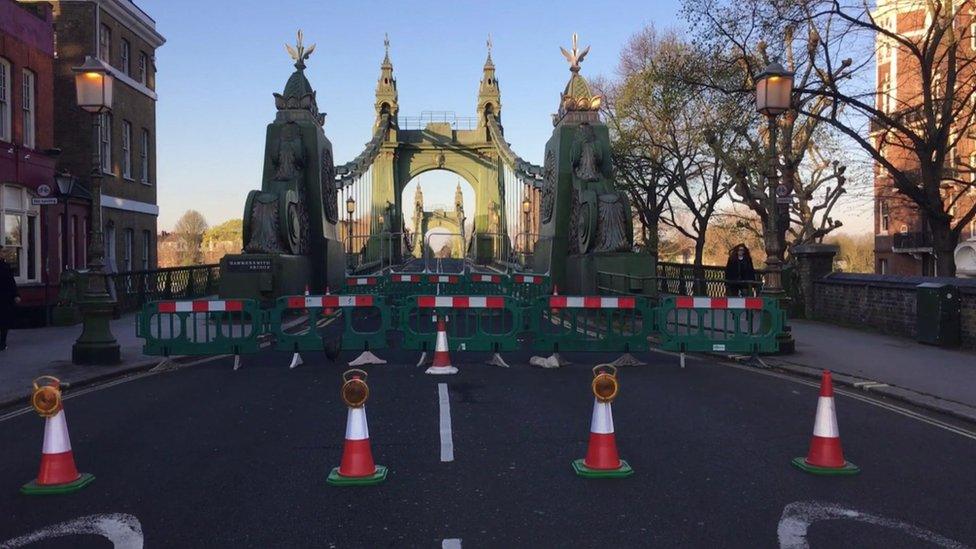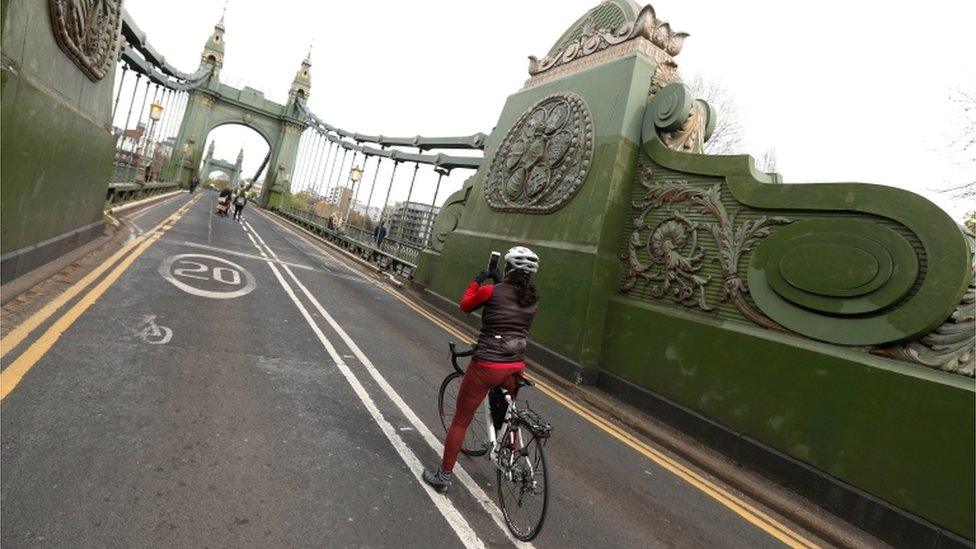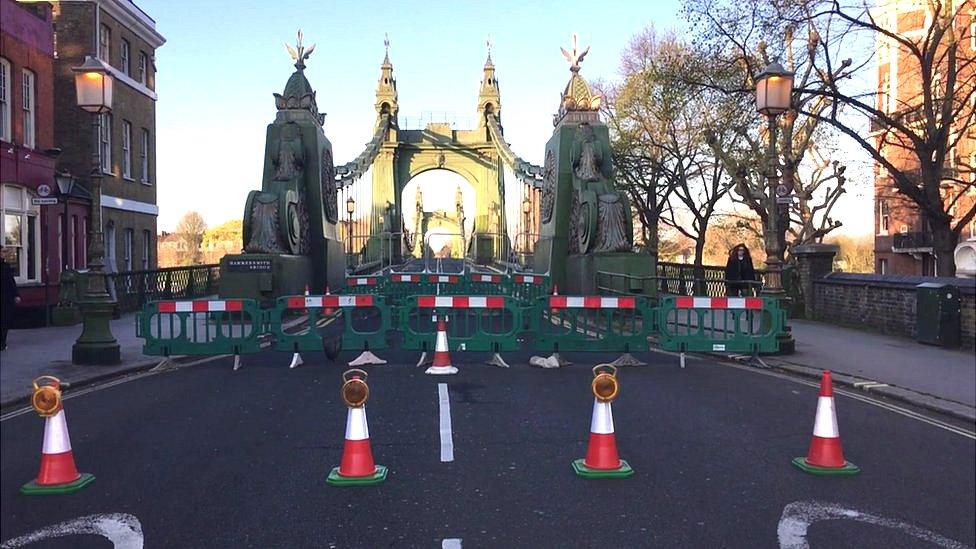Hammersmith Bridge 'could reopen to cyclists and pedestrians'
- Published

Motorists have not been able to use Hammersmith Bridge since April 2019
Hammersmith Bridge could reopen to cyclists and pedestrians sooner than had been expected, a report says.
The 133-year-old bridge was closed entirely in August after cracks in the structure worsened during a heatwave.
The government-commissioned report has now said the crack "may not necessarily be connected with high temperatures".
Transport minister Baroness Vere called on Hammersmith and Fulham Council to look again as to whether the bridge can open with restrictions.
BBC London transport correspondent Tom Edwards said there were hopes that the bridge could reopen to cyclists and pedestrians in the spring - several months earlier than had previously been projected.
In October a special taskforce was set up by the Department for Transport (DfT) to work with bodies like Hammersmith and Fulham Council, which owns the bridge, and Transport for London (TfL) in order to carry out repairs and organise a temporary crossing.
'National disaster'
Hammersmith and Fulham Council's leader Stephan Cowan said it had been the government's "consistent position" that the bridge should be reopened as soon as possible.
He said: "Our response has been to ask if they would take on the legal responsibility for such a decision, but they have consistently refused to do so.
"The bridge was closed because world-leading specialist engineers strongly advised the badly corroded suspension structure faced catastrophic failure.
"If the bridge collapsed, as they advised it could, it would have been a national disaster."

All four pedestals that help to hold up the bridge have cracks in them, the meeting heard
Motorists have not been able to use 133-year-old Hammersmith Bridge since April 2019 after inspectors found "critical faults" in the cast iron casing.
Pedestrians, cyclists and river traffic were banned from using the bridge more than a year later as its condition had worsened.
Thursday's report by engineering consultants AECOM and Cambridge University's Prof Norman Fleck said Hammersmith and Fulham's initial risk assessments were "too conservative".
"There is now a better understanding of how the bridge might be behaving" and that "assumptions on its closure should be revisited", the DfT said.
In response, Mr Cowan said: "Hammersmith and Fulham will continue to look at all possible means of safely having the bridge reopened but will never take any decision that is against the specialist engineers' advice that there is a serious risk to the lives of the tens of thousands of pedestrians, cyclists, motor vehicles drivers and river traffic that used or travelled under the bridge each week."

Analysis
Tom Edwards, BBC London transport correspondent
Broken Hammersmith Bridge - a key strategic route over the Thames - is an international embarrassment and has descended into a political blame game.
Caught in the middle are the local residents who have endured a horrendous time trying to do once normal activities.
Schoolchildren have faced long detours and bike rides up the Thames path in the dark to get to school and the area has suffered from congestion.
Now it seems new up-to-date expert advice could perhaps see a quicker opening to pedestrians and cyclists and boats.
The report says the understanding of the bridge's condition, and in particular the cracks that closed it, has improved considerably since March.
However, there are a several caveats.
The pedestals need blast-cleaning to check for more cracks - that is currently planned to happen in April - and further monitoring equipment would be needed.
A ferry is still being looked at for spring and on Wednesday transport bosses said no long-term funding had yet been secured from the government.
- Published26 November 2020

- Published29 October 2020

- Published14 October 2020
- Published2 October 2020
- Published13 August 2020

- Published3 September 2019

- Published24 May 2019

- Published11 April 2019
